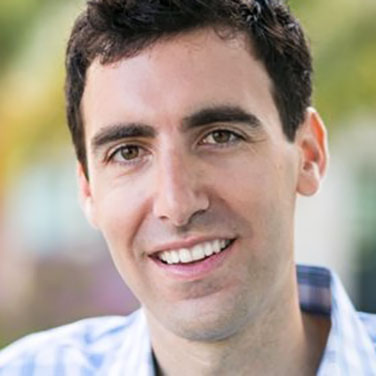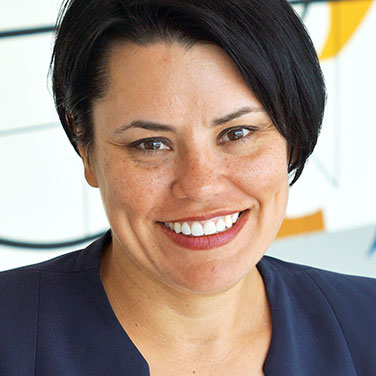
2 Days.
Unlimited Insights.

2 Days.
Unlimited Insights.
From AI and Blockchain, to cloud computing, and the changing face of your workforce, we’ll dig into the most pressing topics you’re facing now, and prepare you to confidently plan for your company’s future. See you in San Francisco!


How do the workers of tomorrow differ from today’s teams, and what do they need to help your company succeed? Explore how technology can be used to leverage the power of your most important asset: your people.

speakertalkdescription

speakertalkdescription

Technical debt is a misunderstood and paradoxical metaphor of the tech industry. It can give life to new, innovating companies and let them validate their ideas rapidly and gain market share, while it can build up to an irrecoverable point to slow down innovation and ultimately take the life of enduring companies. Technical debt starts from a few lines code and grows quickly to the company’s infrastructure, backbone legacy systems, and architecture at large. As a technology consultant I find more than 80% of my clients dealing with large-scale technical debt in their organization. I come across technical debt in different shapes: balls of mud of large monolithic systems, snowflake infrastructure with no automation, fragile applications with high code toxicity, and duplicated capabilities and data throughout the enterprise architecture.
If you find your organization in that 80%, I have some learnings to share with you. I will cover four strategic moves that can help you recover from the technical debt, while being able to innovate and turn the debt to assets over time. I will talk about:

Apple, Google, Amazon, Facebook, and others have reset users’ software expectations. Traditional business applications seem stuck in another century. It doesn’t have to be this way.

speakertalkdescription

There’s a global shortage of data science and ML talent…but over 2 million are signed up for Kaggle. Anthony will give an introduction into what data scientists and machine learners do on Kaggle as a way to explore what excites and motivates them.

Global supply chains are getting harder to trust. Consumers ask: Was this T-shirt made by slaves? Companies ask: Were my goods made from verified, high-quality sources? Governments ask: Where did this ship actually come from? Despite regulations and policies, it’s hard to trace—but embedded in each and every object are microorganisms. By combining microbiome technology with AI, we can uncover invisible patterns across objects, materials, and places to track how things move around the world. It’s a highly scalable solution that will produce new insights into the true provenance of our products, enhance trust, expose corruption, and make for a fairer, more equitable supply chain.

Drawing on the history of innovation explored in his best-selling books Where Good Ideas Come From and How We Got To Now—along with his new book, Farsighted—Johnson will explore the patterns behind breakthrough ideas in history and propose some new strategies for dealing with disruption’s unintended consequences.

Silicon Valley provides important lessons for dealing with disruption. Go beyond the headlines for deep insights gathered from five years of frontline reporting.

Roger analyzes data from various sources, including usage data from the O’Reilly Learning Platform, to study technology trend adoption patterns. Roger will share insights into the trends decision makers should be both aware of and understand as sources of innovation and disruption to their organizations.

Why deep learning isn’t enough, by itself, to get us to genuine artificial intelligence, and what it might take to get there.


From basic BI to using AI to automate and augment human endeavor, data-driven systems are increasingly powerful and pervasive. With great potential comes great risk—and resistance to change. Technology has a role to play in creating trust, but technology alone isn’t enough. Join us to explore the intersection of trust (including privacy and ethics) and technology. Learn how a focus on people and the willingness to embrace ambiguity and acknowledge risk is vital to establishing trust and adoption of data-driven solutions.

AI, blockchain, on-demand marketplaces, drone delivery, the changing nature of work, hypercompetition from digital platforms, cybersecurity, and new business risks—it’s enough to make a CEO’s head spin. But there is one master rule for success in the Next Economy: don’t use technology to replace people; use it to augment them so they can do things that were previously impossible.

speakertalkdescription

Find out how the only bank fully committed to a cloud-based infrastructure is approaching machine learning with a responsible, human-centered focus, including examples of how Capital One is leveraging the technology and ways in which it can be used for good.

You’ve probably heard of the term “dark web,” but what does it actually mean? Danny Rogers, CEO of Terbium Labs, will discuss the internet black market that traffics in stolen data and illicit goods, covering everything from marketplace size and structure and the evolution of data breaches to proactive monitoring practices that can help protect your organization from evildoers on the web.

Building AI solutions at scale means enterprises have an AI-oriented architecture capable of constantly running AI experiments reliably, with continuous integration and deployment, and then learning from those experiments and continuing to improve its operations. In this session, Joseph will discuss an overview of AI-oriented architecture and key principles, providing enterprises with a blueprint for enabling and building AI-first applications, and practical guidance on how to do it “right.”

Companies that understand how to apply machine intelligence will be best positioned to scale and win their respective markets over the next decade. That said, AI Product Management is much harder than most people realize. Without large amounts of labeled training data, solving most AI problems is not possible. The talent and leadership to bridge the worlds of product design, machine learning research, and user experience is scarce. Most organizations will fail to ship successful AI products that matter to their customers. This talk will describe how you can navigate these challenges and build a business where every product interaction benefits from your investment in machine intelligence.

Hadley will provide the context you need to think about blockchain, cryptocurrencies, and how they might apply to your business.

What do the seemingly unrelated traits of grit and kindness have in common? They’re both characteristics possessed by many members of traditionally marginalized communities—as well as major drivers of successful digital transformation. Learn how you can use your personal and professional values, informed and inspired by the talents of a diverse workforce, to grow and thrive.


Learn how an old-world firm leveraged technology to transform everything and thrive in our new world of continuous change—anticipating, scaling, and adapting to meet internal needs and client expectations.

From waterfall, to agile/scrum, to continuous delivery there has been a progression in the software development lifecycle. The goal: increasing release velocity of product while at the same time reducing risk. This session will provide a brief recap of the history of SDLC models and then dive into what we see as the next phase of evolution: progressive delivery. The bulk of the session will describe the benefits of a progressive delivery model, with a focus on business value of rapid delivery as a method to reduce risk